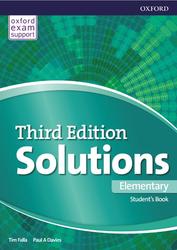English-Haitian Creole Bilingual Dictionary, Valdman А., Moody M., Davies T., 2017.
Haitian Creole (HC) is spoken by approximately 11,000,000 persons in Haiti and in diaspora communities in the United States and throughout the Caribbean. Thus, it is of great utility to Anglophone professionals engaged in various activities—medical, social, educational, welfare— in these regions. As the most widely spoken and best described creole language, a knowledge of its vocabulary is of interest and utility to scholars in a variety of disciplines. The English-Haitian Creole Bilingual Dictionary (EHCBD) aims to assist anglophone users in constructing written and oral discourse in HC; it also will aid HC speakers to translate from English to their language. As the most elaborate and extensive linguistic tool available, it contains about 30 000 individual entries, many of which have multiple senses and include subentries, multiword phrases or idioms. The distinguishing feature of the EHCBD is the inclusion of translated sentence-length illustrative examples that provide important information on usage.

ORTHOGRAPHY AND SOUND SYSTEM.
The oldest extant texts in Creole date from the end of the 18th century. The orthography used is unmistakably adapted from French spelling conventions. This type of spelling system was the rule until the 1940’s. In 1941, a Methodist minister from Northern Ireland, H. Ormonde McConnell, and an American literacy specialist, Frank Laubach, using the first description of the language by the Haitian linguist Suzanne Sylvain (1936) as a springboard, devised an alphabet based on a systematic phonological representation of the language. This system, somewhat modified by two Haitians, the journalist Charles-Fernand Pressoir and the then Minister of Education Lélio Faublas, had a semi-official status and was used in all educational and religious works. It was also adopted by the government’s literacy and developmental agency, the Office National d’Alphabétisation et d’Action Communautaire (ONAAC). In 1975, a slightly modified version of the Pressoir-Faublas alphabet was introduced. Labeled IPN because it was devised by persons affiliated with the Institut Pédagogique National (IPN), this alphabet was given official recognition in 1979 by the government headed by Jean-Claude Duvalier. It is used today in all official publications, in a wide variety of written texts, and in material destined for school programs where some instruction is provided in Creole. This is the orthography that is used in this dictionary. A guide providing correspondences between spelling and pronunciation is provided below.
TABLE OF CONTENTS.
Acknowledgments.
Editor Biographies.
Preface.
Introductory Remarks on Haitian Creole.
Orthography and Sound System.
Grammatical Sketch.
Numbers in Creole.
A User’s Guide to the Dictionary.
Detailed Discussion of the Content of Entries.
List of Abbreviations.
Bibliography.
English-Haitian Creole Bilingual Dictionary.
Бесплатно скачать электронную книгу в удобном формате, смотреть и читать:
Скачать книгу English-Haitian Creole Bilingual Dictionary, Valdman А., Moody M., Davies T., 2017 - fileskachat.com, быстрое и бесплатное скачивание.
Скачать pdf
Ниже можно купить эту книгу, если она есть в продаже, и похожие книги по лучшей цене со скидкой с доставкой по всей России.Купить книги
Скачать - pdf - Яндекс.Диск.
Дата публикации:
Теги: Valdman :: Moody :: Davies :: книги на английском языке :: английский язык :: гаитянский язык :: креольский язык :: словарь
Смотрите также учебники, книги и учебные материалы:
Следующие учебники и книги:
 Fly High 1, Pupil s Book, Kozanoglou D., 2010 — Fly High 1 offers an enjoyable introduction to English for children starting at the beginning of the school system. It … Книги по английскому языку
Fly High 1, Pupil s Book, Kozanoglou D., 2010 — Fly High 1 offers an enjoyable introduction to English for children starting at the beginning of the school system. It … Книги по английскому языку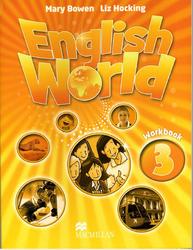 English World 3, Workbook, Bowen M., Hocking L., 2009 — English Work is the first-ever integrated ten-level print and digital English course for primary and secondary schools. Written by the … Книги по английскому языку
English World 3, Workbook, Bowen M., Hocking L., 2009 — English Work is the first-ever integrated ten-level print and digital English course for primary and secondary schools. Written by the … Книги по английскому языку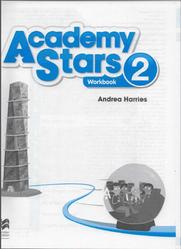 Academy Stars 2, Workbook, Harries A., 2017 — Фрагмент из книги. Now Alice and I are at the airport again. It s hot! I m wearing sunglasses and … Книги по английскому языку
Academy Stars 2, Workbook, Harries A., 2017 — Фрагмент из книги. Now Alice and I are at the airport again. It s hot! I m wearing sunglasses and … Книги по английскому языку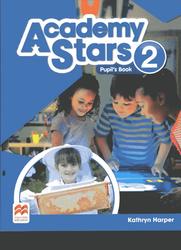 Academy Stars 2, Pupil s Book, Harper K., 2017 — Фрагмент из книги. I visited the zoo with my mum last weekend. A guide talked about the animals and we … Книги по английскому языку
Academy Stars 2, Pupil s Book, Harper K., 2017 — Фрагмент из книги. I visited the zoo with my mum last weekend. A guide talked about the animals and we … Книги по английскому языку
Предыдущие статьи:
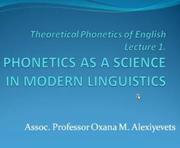 Theoretical phonetics of english lecture 1, Phonetics as a science in modern linguistics articles, Alexiyevets M. — PHONETICS AS A SCIENCE IN MODERN LINGUISTICS. 1.Phonetics as a science and its practical application. 2.Phonetics and communicative systems. 3.Phonetics … Книги по английскому языку
Theoretical phonetics of english lecture 1, Phonetics as a science in modern linguistics articles, Alexiyevets M. — PHONETICS AS A SCIENCE IN MODERN LINGUISTICS. 1.Phonetics as a science and its practical application. 2.Phonetics and communicative systems. 3.Phonetics … Книги по английскому языку Eyes Open 4, Teacher’s Book, Holcombe G., 2015 — Eyes Open 4, Teacher s Book, Holcombe G., 2015. Eyes Open is a four-level course for lower-secondary students, which will … Книги по английскому языку
Eyes Open 4, Teacher’s Book, Holcombe G., 2015 — Eyes Open 4, Teacher s Book, Holcombe G., 2015. Eyes Open is a four-level course for lower-secondary students, which will … Книги по английскому языку Eyes Open 3, Teacher’s Book, Holcombe G., 2015 — Eyes Open 3, Teacher s Book, Holcombe G., 2015. Eyes Open is a four-level course for lower-secondary students, which will … Книги по английскому языку
Eyes Open 3, Teacher’s Book, Holcombe G., 2015 — Eyes Open 3, Teacher s Book, Holcombe G., 2015. Eyes Open is a four-level course for lower-secondary students, which will … Книги по английскому языку New Total English, Starter, Teacher’s Book, Kempton G., 2011 — New Total English, Starter, Teacher s Book, Kempton G., 2011. New Total English places a lot of emphasis on providing … Книги по английскому языку
New Total English, Starter, Teacher’s Book, Kempton G., 2011 — New Total English, Starter, Teacher s Book, Kempton G., 2011. New Total English places a lot of emphasis on providing … Книги по английскому языку

